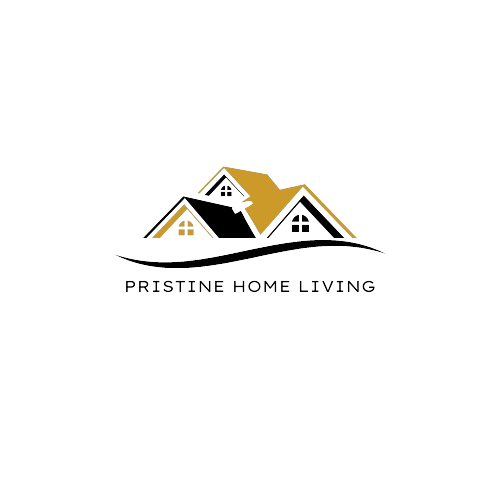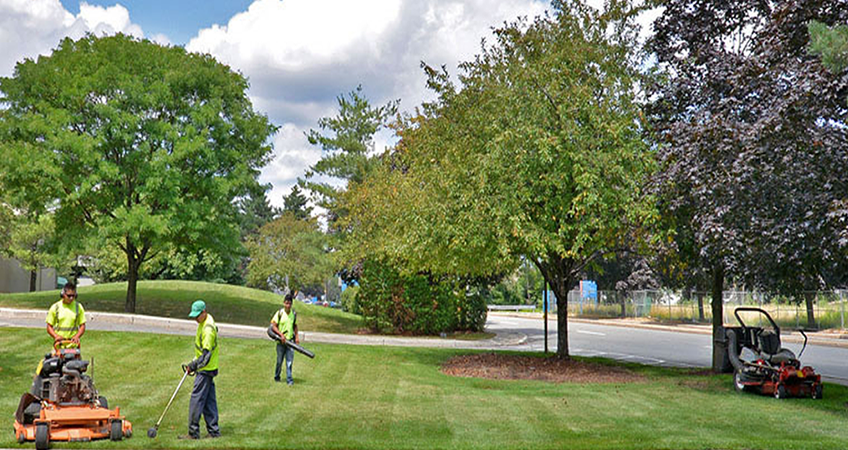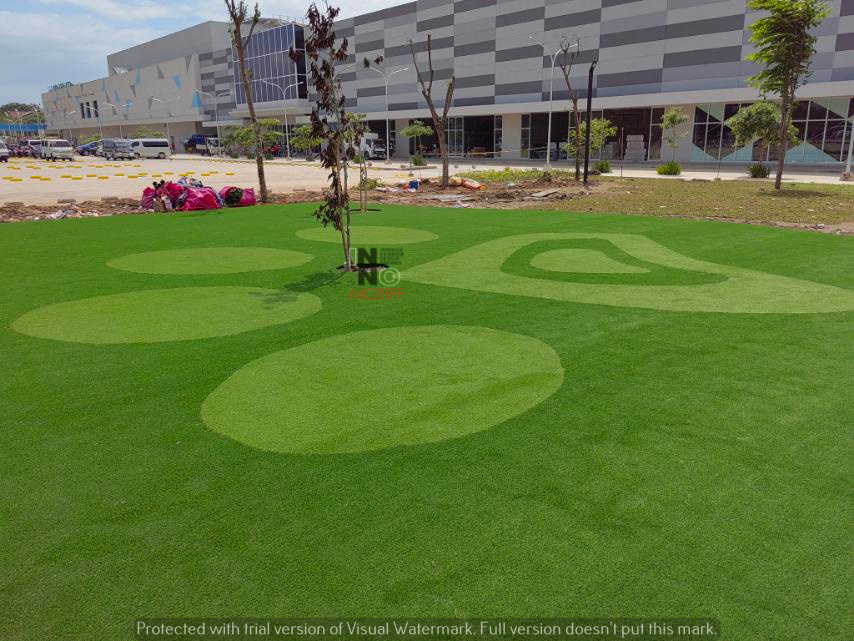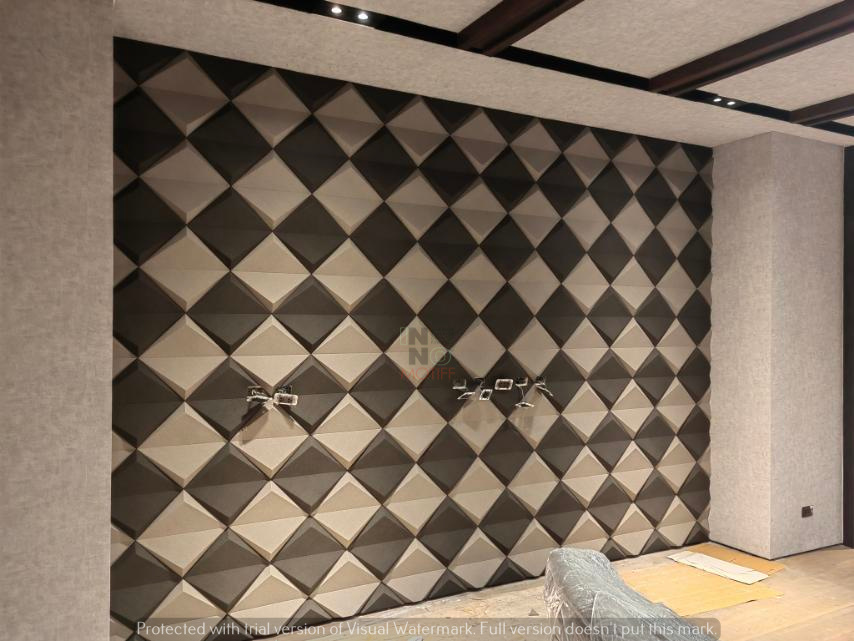In the bustling world of commercial real estate, the appearance of green spaces can significantly impact the overall ambiance and value of a property. Effective landscape maintenance is crucial, but as the demands and complexities of maintaining these spaces grow, traditional methods may fall short. Enter innovative solutions—game-changers in the landscape maintenance industry that offer smarter, more efficient ways to keep your commercial spaces looking their best. This blog explores cutting-edge technologies and practices that are transforming commercial landscape maintenance and helping businesses achieve lush, well-managed green areas.
Understanding the Need for Innovation in Landscape Maintenance
Commercial landscape maintenance faces numerous challenges, from managing large-scale green areas to dealing with fluctuating weather conditions and maintaining aesthetic appeal. Traditional maintenance methods, while effective to an extent, can be labor-intensive and costly. Innovation in landscape maintenance addresses these issues by offering more efficient, sustainable, and cost-effective solutions. Adopting modern techniques not only improves the quality of maintenance but also ensures long-term sustainability and reduced operational costs. According to industry reports, businesses that implement innovative solutions see up to a 30% reduction in maintenance costs and a 40% improvement in operational efficiency.
Smart Irrigation Systems
Smart irrigation systems are revolutionizing how we manage water in landscape maintenance. These systems use sensors, weather data, and algorithms to optimize watering schedules, ensuring that plants receive the right amount of water without wastage. Benefits include significant water conservation, reduced utility bills, and healthier plants. For instance, a commercial property in California implemented a smart irrigation system and reported a 50% reduction in water usage while maintaining lush, green spaces throughout the year. Technologies such as drip irrigation and soil moisture sensors are becoming standard tools for efficient landscape management.
Advanced Soil Management Techniques
Soil health is fundamental to the success of any landscape, and advanced soil management techniques are now available to ensure optimal soil conditions. Technologies like soil sensors and automated soil testing devices provide real-time data on soil moisture, pH levels, and nutrient content. This information allows for precise adjustments to fertilization and watering practices. For example, a recent project in Singapore used soil moisture sensors to tailor irrigation schedules, resulting in improved plant growth and reduced fertilizer use. These advancements enable landscape managers to maintain healthier soil and more vibrant landscapes.
Sustainable Landscaping Practices
Sustainability is a growing focus in commercial landscape maintenance. Sustainable practices, such as using native plants, organic fertilizers, and environmentally-friendly pest control methods, not only benefit the environment but also reduce maintenance costs. Native plants, adapted to local climates, require less water and fewer chemicals, making them a smart choice for eco-friendly landscaping. A prominent office park in Melbourne adopted sustainable landscaping practices and saw a 25% decrease in maintenance costs and a noticeable enhancement in landscape quality. Embracing sustainability helps businesses contribute to environmental conservation while maintaining beautiful green spaces.
Technology-Driven Landscape Design
Technology-driven landscape design is reshaping how landscapes are planned and executed. Tools such as 3D modeling and simulation allow for precise design visualization and customization, ensuring that the final landscape meets all aesthetic and functional requirements. These technologies enable designers to experiment with various elements before implementation, reducing the likelihood of costly modifications. For instance, a commercial real estate development in New York used 3D simulation to design an intricate green space, resulting in a highly successful project that met all design goals and delighted clients.
Automated Maintenance Equipment
Automated maintenance equipment is streamlining routine landscape tasks, such as mowing and trimming. Robotic mowers and autonomous trimmers can operate independently, providing consistent results and freeing up human resources for more complex tasks. These innovations not only enhance efficiency but also reduce labor costs. A corporate campus in Tokyo implemented robotic mowers and reported a 40% reduction in labor costs and a noticeable improvement in lawn quality. Automated equipment represents the future of landscape maintenance, offering reliability and precision.
Data-Driven Landscape Management
Data-driven landscape management leverages analytics to optimize maintenance practices and decision-making. By collecting and analyzing data on various factors, such as weather conditions, plant health, and maintenance schedules, landscape managers can make informed decisions that enhance the overall effectiveness of their operations. Software platforms that provide comprehensive analytics help businesses predict maintenance needs and address issues proactively. A retail center in London utilized data analytics to streamline its maintenance processes, resulting in improved operational efficiency and cost savings.
Eco-Friendly Pest and Weed Control
Eco-friendly pest and weed control methods are gaining traction as businesses seek to minimize their environmental impact. Techniques such as integrated pest management (IPM) and natural pest control solutions reduce the need for harmful chemicals while effectively managing pests and weeds. For example, a public park in Toronto adopted IPM practices, leading to a 50% decrease in chemical use and a healthier, more balanced ecosystem. Eco-friendly approaches offer a safer alternative for maintaining healthy landscapes without compromising environmental integrity.
Enhancing Aesthetic Appeal with Innovation
Innovative techniques are not only functional but also enhance the visual appeal of commercial landscapes. From dynamic lighting systems that highlight architectural features to creative use of color and texture in plant selection, modern solutions can transform any space. A luxury hotel in Dubai integrated LED lighting and artistic plant arrangements into its landscape design, creating a stunning visual impact that attracted positive attention from guests and media alike. Innovation in aesthetics helps businesses create memorable and appealing green spaces that stand out.
Future Trends in Commercial Landscape Maintenance
The landscape maintenance industry is continually evolving, with new technologies and practices emerging on the horizon. Future trends may include further advancements in automation, increased use of artificial intelligence in landscape management, and more sophisticated sustainability practices. Businesses that stay ahead of these trends will be better positioned to capitalize on new opportunities and maintain competitive advantages. Preparing for these changes involves staying informed and being willing to adapt to the latest innovations.
Takeaway
Innovative solutions in commercial landscape maintenance offer numerous benefits, from improved efficiency and cost savings to enhanced aesthetics and sustainability. By embracing technologies such as smart irrigation, advanced soil management, and automated equipment, businesses can achieve superior landscape quality and operational excellence. Staying updated with these innovations not only helps maintain beautiful green spaces but also positions your business as a leader in modern landscape management. Explore and implement these solutions to elevate your commercial spaces and enjoy the many advantages they bring.









